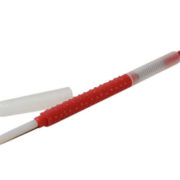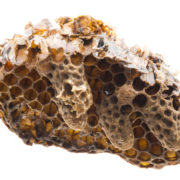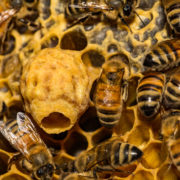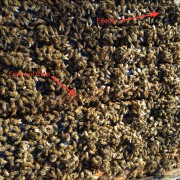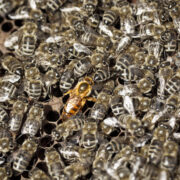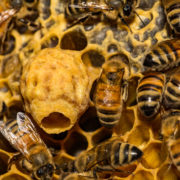Handling Queen Cells
Queen cells are very fragile, and an errant poke of a beekeeper’s finger into a queen cell can kill it, causing sadness for the queen breeder, and undoing hundreds of hours of hard work by the nurse bees.
Virgin queen bees typically hatch out of their queen cells on the twelfth day after grafting. Many queen breeders, however, pull their queen cells from the cell building colonies on the ninth or tenth day, and store the queen cells inside an incubator for the remaining two or three days. This early harvest frees up space in the cell building colony and reduces the chance of an early virgin queen bee hatching, running amok and destroying the rest of the cells.
When a mature queen cell is ready to be placed inside a queenless colony or inside a mating nuc, it needs to be transported from the queen-rearing apiary to the mating yard. This is where the queen cell protector does its work. The mature queen cells are placed into cell protectors and stacked into trays for transporting. The protectors keep the queen cells from being accidentally damaged by the beekeeper during handling. They also protect the queen cells from falling over or colliding into each other should the transporting vehicle hit a bump or should the driver need to stop suddenly.
Once the cells have arrived at the mating yard and begin their first step on becoming mated queen bees, the cell protectors can either be placed in the colony with the queen cell inside it; or the queen cell can be placed into the colony without the protector, and the protector saved for the next batch of queen cells. Some beekeepers think that keeping the queen cells inside cell protectors within the bee hive aids in protecting the queen cell from being destroyed by the worker bees; but this is not really true. If the bees want to remove a queen cell from a colony they are going to do it with or without the queen cell protector.


